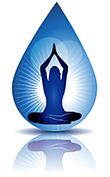 How Mind-Body Therapies Help Depression
How Mind-Body Therapies Help Depression
Mind-body interventions are a group of healing techniques that enhance the mind’s interactions with bodily functions, to induce relaxation and improve overall health and well-being. Mindfulness is an essential component of mind-body practices. Mindfulness has been described as the process of being aware of the present moment without judgment.
Daily practice is essential for deriving benefit from these therapies, which are used to treat a variety of health conditions, including depression.
A growing body of research indicates that mind-body therapies are safe and effective ways of mitigating physical and emotional symptoms, as well as improving coping skills. Because these practices are enjoyable, noninvasive and beneficial, they are well-suited for people with depression to help manage their own care.
Mind-body interventions have become increasingly popular over the last two decades. More than a third of adults and over 50% of those with depression report using some type of complementary health approach in the past year.
A substantial proportion of individuals with depression do not receive conventional treatment and disadvantaged individuals are especially unlikely to receive treatment. Many mind–body approaches offer a potentially more accessible and acceptable alternative to conventional mental health treatment for those who may not otherwise receive treatment.
Mind–body interventions describe health approaches that work on a physical and mental level such as yoga, tai chi and meditation. The category was introduced in September 2000 by the United States National Center for Complementary and Integrative Health (NCCIH) and encompasses a wide variety of alternative medicine interventions. For the purposes here, the scope is narrowed to include mind and body practices that are administered or taught by a trained practitioner with many being able to be practiced at home.
Meditation
Meditation is a practice where an individual uses a technique—such as mindfulness, or focusing the mind on a particular object, thought, or activity—to train attention and awareness, and achieve a mentally clear and emotionally calm and steady state.
For thousands of years, meditation has been used in Eastern religious and spiritual traditions as a method of uniting the spirit and the mind. Through the years, medicine men and tribal doctors have used the healing benefits of meditation. In more modern times, meditation has become a popular way to relieve the stress from a fast-paced world as well as helping to improve both mental and physical health.
It is now well known that physical exercise can alter hormone levels within the body and have a positive effect on our moods. Research has demonstrated that meditation works in a related manner and offers similar benefits. Despite the obvious metabolic differences between running and meditation, similar positive mood changes occur after both of these activities.
Spontaneous thoughts are often cited as a symptom of depression. For this reason, scientists have investigated ways in which these thoughts can be controlled without the use of drugs. Meditation and prayer can help prevent depression by reducing intrusive thoughts. In an Italian study of 20 men and women, participants were monitored after prayer, meditation and carrying out a memory task. The results showed that there was a significant reduction in thought arousal during both the memory task and the reciting of prayer after meditation.

References
Buric I, Farias M, Jong J, Mee C, Brazil IA. (2017). What Is the Molecular Signature of Mind-Body Interventions? A Systematic Review of Gene Expression Changes Induced by Meditation and Related Practices. Front Immunol, 8, 670.
Burnett-Zeigler I, Schuette S, Victorson D, Wisner KL. (2016). Mind–Body Approaches to Treating Mental Health Symptoms Among Disadvantaged Populations: A Comprehensive Review. J Altern Complement Med, 22(2), 115–124.
Chen KM, Li CH, Lin JN, Chen WT, Lin HS, Wu HC. (2007). A feasible method to enhance and maintain the health of elderly living in long-term care facilities through long-term, simplified tai chi exercises. J Nurs Res, 15(2), 156–164.
Chou KL, Lee PW, Yu EC, Macfarlane D, Cheng YH, Chan SS, Chi I. (2004). Effect of Tai Chi on depressive symptoms amongst Chinese older patients with depressive disorders: a randomized clinical trial. Int J Geriatr Psychiatry, 19(11), 1105–1107.
Churchill DR, Persinger MA, Thomas AW. (1994). Geophysical variables and behavior: LXXVII. Increased geomagnetic activity and decreased pleasantness of spontaneous narratives for percipients but not agents. Perceptual and Motor Skills, 79(1 Pt 2), 387–392.
Cortright, Brant (1997). Psychotherapy and Spirit: Theory and Practice in Transpersonal Psychotherapy. Albany NY: SUNY Press.
About This Excerpt
The above excerpt is reprinted from Dr. Randi Fredricks’ book Complementary and Alternative Treatments for Depression. No part of this article may be reproduced in any form or by any electronic or mechanical means, including information storage and retrieval systems.
Disclaimer: This article is not intended to provide medical advice, diagnosis or treatment. Views expressed here do not necessarily reflect those of Dr. Randi Fredricks as articles often present the published results of the research of other professionals. Copyright © 2020.